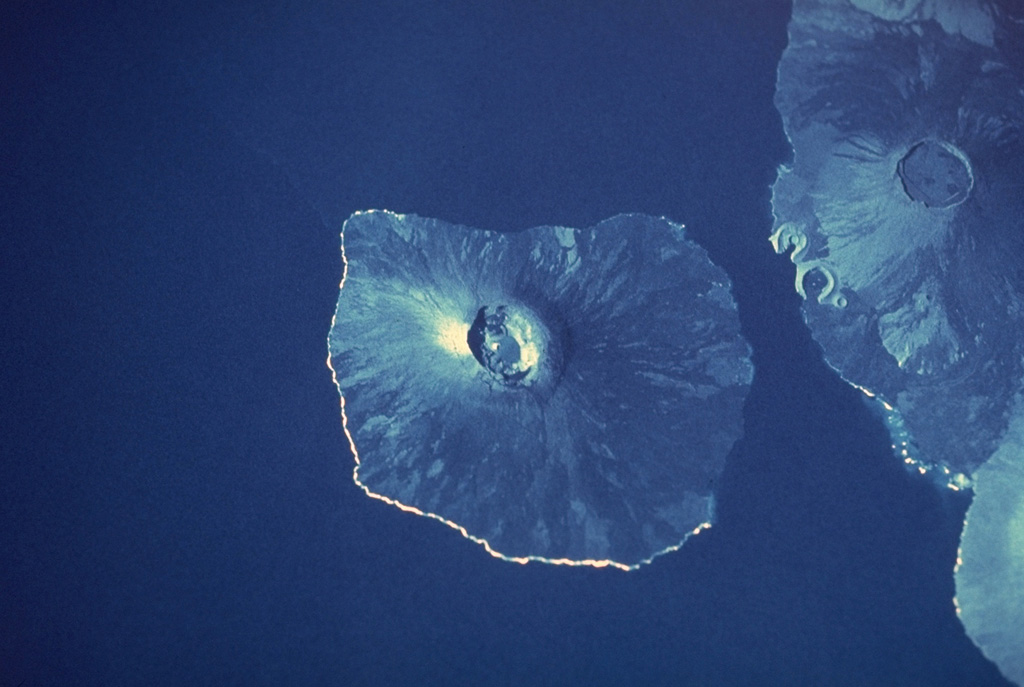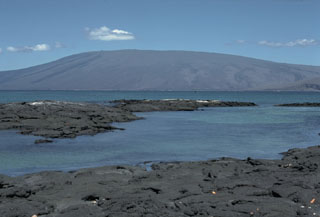Image GVP-04675

Two massive Galápagos shield volcanoes, their slopes darkened by young unvegetated lava flows that reach to the sea, appear in this space-shuttle photograph. Fernandina volcano, the most active in the Galápagos Islands, forms a 30 x 34 km wide island with a 4 x 6.5 km wide caldera at its summit. Darwin volcano, north of the midpoint of Isabela Island, has a 5-km-wide summit caldera. The tuff cones of Tagus and Beagle are prominent along its western coast. The light-colored area south of Darwin is the lower western flank of Alcedo volcano.
NASA Space Shuttle image, 1989 (http://eol.jsc.nasa.gov/).
![]() This image is made available as a Public Domain Work, but proper attribution is appreciated.
This image is made available as a Public Domain Work, but proper attribution is appreciated.

Darwin

Fernandina
